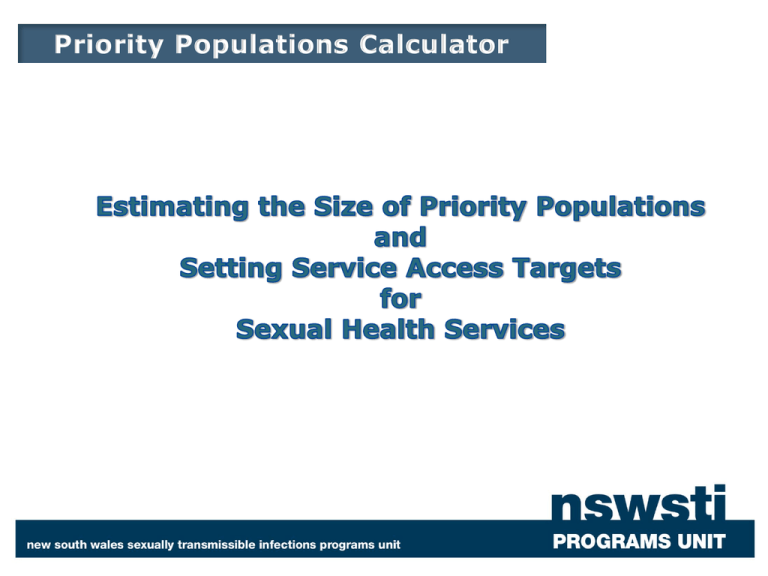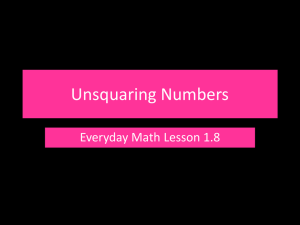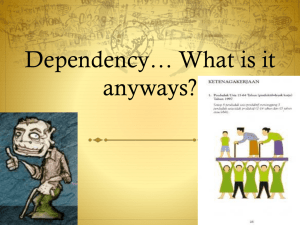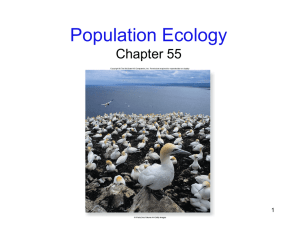
Priority Populations Calculator
Priority Populations Calculator
Priority Populations Calculator
Background
The NSW STI Strategy 2006-2010 acknowledges the finite capacity of
Publicly Funded Sexual Health Clinics and the need for services to be
directed where most needed. The Strategy requires that Sexual Health
Clinics establish goals and targets in relation to priority populations to assist
with prioritising access.
Estimating the size and locations of priority populations within Area Health
Service boundaries is an important step in establishing goals and targets and
in planning outreach activities in relation to access by priority populations.
Priority Populations Calculator
Background (continued)
Some approaches to doing this are described as well as limitations in
estimating the size and location of some priority populations groups.
In addition to providing guidance on how to estimate the size of priority
populations, a range of other information sources are identified which can
be used in decision making when setting targets.
Priority Populations Calculator
Aboriginal People
ABS census data now interfaces with Google maps and it is now
easier to obtain numbers and percentages of Aboriginal
people within a selected local government area by entering the
location or postcode into the search field and clicking on the
button.
Example: Entering Broken Hill into the search field and clicking on
quick stats will inform you there are 1206 indigenous people in
Broken hill who make up 6.2% of the total population.
A screen shot of the results is shown in the next slide.
Priority Populations Calculator
Aboriginal People
Priority Populations Calculator
Aboriginal People
The Social Atlas of Australia 2010 also has a navigable Geographic
Information System (GIS) where the Aboriginal populations
between different suburbs can be compared. Sorting and age
stratification are also possible.
A screen shot of the GIS is presented on the next page. Clicking on
it will take you to the actual online GIS hosted by the Population
Health Information Development Unit (University of Adelaide).
Priority Populations Calculator
Click on ‘select data’ to select the required demographic filter when using the
live application
Priority Populations Calculator
Aboriginal People
Point for consideration
It is particularly important to identify those at risk within the population. This
could mean increasing the range of broad screening programs that in other
populations might be confined to “under 25” to, for instance, “under 30” in an
Aboriginal population.
The differences in reported incidence rates of STIs between local government
areas may also need to be considered when planning outreach activities.
Priority Populations Calculator
Gay and other MSM
ABS census data provides male populations and population by age
groups searchable by local government area. Estimated population
growth rates over time are also provided.
The Social Atlas of Australia 2010’s Geographic Information System
(GIS) provides populations and percentages of males by age group.
Projected population numbers until 2025 are also provided.
Priority Populations Calculator
Gay and other MSM
The Australian Study of Health and Relationships reported that 2.5%
of the male populations between ages 16 to 59 years identified as
gay or bisexual.
Same sex experience was reported by 5.9% of men surveyed (Grulich
et al 2007).
Analysis of data from the Sydney Gay Community Periodic Survey
suggests that the proportion of men who identify as gay or bisexual
may be as high as 48% in certain inner city locations where gay
communities cluster. (Madeddu et al, 2006).
Prestage et al (2008) estimated there were 74,000 homosexual and
bisexual men in NSW in 2001.
Priority Populations Calculator
Gay and other MSM
Example 1: The 2006 census report
there are 74,282 male residents in
Parramatta LGA. Excluding children (<14
yrs) there are 59,699 males. Assume
2.5% of these males are gay or bisexual
and another 5.9% have same sex
experience would indicate there may be
between 1492 and 3522 MSM in
Parramatta and 1.9% or 1,134 males
have had a same sex experience in the
previous year.
Priority Populations Calculator
Gay and other MSM
Example 2: Sydney (C) – east (SLA)
highlighted on the right was reported to
have a total male population of 28520.
Excluding 5.4% of the population under
age 14 would result in 26979 males. As
the area is known to have a significant
clustering of MSM, if we assume 48% of
males are MSM the population of MSM in
the area (excluding transient visitors)
could be as high as 12949.
Priority Populations Calculator
Gay and other MSM
Recent developments in mobile technology have also made it easier to
locate MSM within your area
Grindr is a social-networking application that uses a global positioning
system. It allows the user to contact gay and bisexual men who are
nearby via a smart phone. Through a simple user interface, pictures of
men, arranged from nearest to farthest away are displayed. There are
options to chat, send pictures, and share one's location. Over 1000,000
men in 180 countries are part of the ‘Grindr’ network. Sexual health
services can potentially link into this network and remind those within
the vicinity to drop-in for a sexual health check up. It is also possible to
estimate the number of MSN who frequent specific locations by
measuring the number of Grindr profiles that appear over different time
periods as the distance from the measuring point is also provided by
the Grindr.
Priority Populations Calculator
Young People
The number of young people ages between 15 to 24 years within a selected
region can be obtained from ABS census data and from the navigable
interface provided by the Social Health Atlas of Australia Geographic
Information System (GIS).
The total number of young people in an area health service can be calculated
by adding the number of young people in each local government area.
Priority Populations Calculator
Young People
It is particularly important to identify those at risk within the population. The
highest notifications for Chlamydia from 01.04.09 to 31.03.10 in NSW were
from Females age 20-24. Notification rates from post codes or LGA where
STIs are notified from should also be taken into account when planning
outreach activities. It is also possible to identify areas of relative socioeconomic disadvantage via the Social Health Atlas of Australia GIS where
outreach activities should be targeted.
Priority Populations Calculator
Sex Workers
The Australian Study of Health and Relationships found that 0.9% of men and
0.5% of women had been paid for sex. In the past year it found that fewer
than 0.1% of men and women had been paid for sex with men.
Councils will have access to information about legal brothels and possibly some
private sex workers if they have put in a development application. Street sex
work is more limited but highly visible.
Priority Populations Calculator
Sex Workers
Personal ads in the newspapers and other sources such as SWOP would be
useful to access within LGAs in order to estimate the number of workers who
could potentially attend a service. Police also have data on street workers in
relation to complaints. It can be useful to develop a relationship with Local
Area Commands to develop collaborative approaches to managing issues
concerning the sex industry although any constraints and barriers to
developing working partnerships with Local Area Commands may need to be
considered first.
Priority Populations Calculator
Sex Workers
For example, approximately 50 licensed brothels are registered with the City of
Sydney Council (average 4 sex workers per licensed brothel) sites, and 15
massage parlours. It is estimated there are around 150 to 200 home-based
sex workers in the City of Sydney. Sex Worker Organisations such as the
Scarlet Alliance estimate street based sex workers comprises around 1 to 2
percent of all sex workers. Sex workers work part time and there may be
about 200 sex workers working at any one night in the City of Sydney.
Priority Populations Calculator
People with HIV/AIDS
HIV notifications can be obtained from the Area Health Service Public Health
Units Residential postcodes are reported at notification. HARP units also
receive quarterly reports on Bacterial STI Notification Data from the NSW
Health Communicable Diseases Branch grouped by the former 18 Area Health
Services.
The public health unit can provide total AIDS death notifications (check with
the unit regarding reliability of the data).
Priority Populations Calculator
People with HIV/AIDS
Estimate the number of people with HIV in the area by deducting the number
of AIDS deaths from HIV notifications (Please note: this does not take
migratory factors into account).
In some AHS there will be multiple service providers and GPs in high case load
areas may be contacted for an estimate of their patient numbers. Patients are
entitled to choose where to go for services and may often travel across AHS
boundaries especially in Sydney. Other sources of information would include
support services such as ACON, Positive Life and the Bobby Goldsmith
Foundation as they access clients separately.
Priority Populations Calculator
People with HIV/AIDS
Estimates of the number of people living with HIV infection are provided on
page 122 of the National Centre for HIV Epidemiology and Clinical Research’s
Annual Surveillance Report. 9261 people were estimated to be living with HIV
infection in 2008 in NSW.
The HIV Surveillance quarterly reports provides quarterly updates on
cumulative and 2 yearly interval of new diagnosis of HIV infection. Number of
deaths are also reported (Example: 1 Apr 08 to 31 Mar 09 = 20 deaths).
Projected changed in HIV notifications over time has been estimated by the
National Centre of HIV Epidemiology and Clinical Research and reported in the
following document:
Mathematical models to investigate recent trends in HIV notifications among
men who have sex with men in Australia.
Priority Populations Calculator
The National Drug Strategy Household Survey 2007 reported that in 2007 it
was estimated that 1.9% of the population of Australia over age 14, (328,100)
had ever injected drugs and 0.5% of Australians over 14 82 400 had injected
drugs within the past 12 months.
Alternatively, the Hepatitis C Virus Projections Working Group (Pg. 18) has
estimated that in Australia there are 80,000 regular and 120,000 occasional
injecting drug users (IDU). As 33% of the Australian population lives in NSW,
it could be assumed there are 26,4000 regular and 39,600 occasional injecting
drug users in NSW.
The number of IDUs can be estimated by applying the formula to the findings
from the National Drug Strategy Household Survey or Hepatitis C Virus
Projection Working Group Estimates.
Priority Populations Calculator
Many IDUs access Needle and Syringe Programs (NSP). Primary NSPs would
be able to calculate IDU numbers from needles provided more readily than
secondary NSPs as they survey their clients and often have some idea of
whether the equipment is being used by the person collecting or a group.
Certain ages groups also report higher injecting rates than others. Example
those ages 30 to 39 report the higher rates of recent IDU. Males are also more
likely to inject than females (2.5% vs 1.3%) (National Drug Strategy
Household Survey 2007).
Priority Populations Calculator
The Australian Needle and Syringe Program Survey (ANSPS) is a crosssectional study that has been conducted over a one to two week period each
year since 1995. The survey forms the basis of Australia’s human
immunodeficiency virus (HIV) and hepatitis C surveillance among injecting
drug users, and monitors behavioural indices of risk in addition to prevalence
of infection. Demographic data collected include age group, Aboriginality,
sexual identity and history of sex work. Therefore it is possible to ascertain
the proportion of injecting drug users who are also members of other priority
groups.
Priority Populations Calculator
Priority Populations Calculator
The number of adults within a selected region can be obtained via 2006
Census data’s interface with Google maps or from the Social Atlas of
Australia’s Geographical Information System.
According to the Australian Study of Health and Relationships 15.1% of men
and 8.5% of women reported multiple sexual partners in the past year.
Reporting multiple opposite-sex partners was significantly associated with
being younger, identifying as bisexual, living in major cities, having a lower
income, having a blue-collar occupation, and not being married.
Filters that relate to some of the above demographics can be applied to ABS
data and may be helpful in strategically locating outreach programs targeting
this particular priority group in the areas most needed.
Priority Populations Calculator
Example: Through the interactive interface provide by the ABS website it is
possible to ascertain that 46% of the population of Liverpool are not in a
marriage compared with 61% in Leichhardt and 49% in Fairfield. The Social
Health atlas GIS system also indicates that Fairfield East has the largest
percentage (32%) of blue collar (unskilled or semi skilled) workers in NSW.
This compares with 4.6% in Leichhardt and 21% in Liverpool.
While Leichhardt has a higher percentage of single people, the Index of
relative socio-economic disadvantage indicates that Fairfield is the most socioeconomically disadvantaged among the local government areas mentioned,
and may therefore be a preferred location for outreach activity targeting this
priority group. (Leichhardt =1083; Liverpool = 933 & Fairfield =831).
Priority Populations Calculator
While CALD populations are not listed as a priority group within the NSW STI
Strategy, the Strategy’s Environmental Scan states on pg.27 that the needs
of CALD people should be considered where applicable to local population
demographics and patterns of immigration settlement.
As country of birth and language spoken at home is also collected in the
Australian Census it is possible to extract CALD demographic data from the
ABS website and also via the Social Atlas of Australia’s GIS. Identification of a
priority CALD group should be made in conjunction with relevant multicultural
agencies (NSW Sexually Transmissible Infections Strategy Environmental
Scan 2006-2010).
Priority Populations Calculator
Example: Applying the demographic filter for ‘people born in China’ using the
interface provided by the Social Atlas of Australia’s GIS and using the sort
function shows that in NSW, Burwood has the largest percentage and
Canterbury, the largest number of people who were born in China.
Priority Populations Calculator
While an estimation of the size of a priority populations will assist
services in identifying targets, additional information provided in Part 2
is also required to inform decision making.
Priority Populations Calculator
Embedded PDF file, please
click to view references










